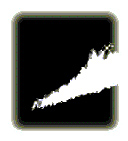


![]()
Autumn 2000
![]()

REVIEW & COMMENTARY
|
IMAGINARY MUSEUM: Poems On Art by Joseph Stanton |
|
Time Being Books, 1999 by George Wallace In this volume Joseph Stanton offers the insight of a scholar who is able to turn theories of aesthetics toward entertaining and informative end - at once evoking the external subject at hand, and revealing the poet's internal world. A poet whose work has been published in the likes of Poetry, New York Quarterly, Harvard Review and Poetry East, Stanton's choice of topic reveals his enduring engagement in the art-inspired poetry genre - as well as in such areas as children's books and more particularly American painting. There are six distinct sections, entitled "Western Wing," "Moving Picture Room," "Eastern Pavilion," Bruegel Gallery", "Exhibition of Tales," and "Hopper Collection." Despite the inevitably hyperbolic characterization on the back cover that the book is a "veritable Prado of Poems" - blurb-speak, as it were - the volume does have the heft of a tour through museum "galleries" of a museum collection: though cast in a manner that includes passionate and attentive observations and discoveries, on a more personal personal level then one might have offered up by a volunteer tour guide. Stanton is not averse to a playful look at things - some of the motion picture poems are distinctly entertaining - but more frequently, Stanton's aim is more dispassionate and tangential: "The ending does not end the shrinking." he writes in The Incredible Shrinking Man. "Because for God there is no zero,/there is nowhere for him to go but down..." Cleverly, there is even a turnabout of sorts... a poem exploring how an artist might have reacte to an art poem - WD Snodgrass' study of Matisse's The Red Studio, in which Snodgrass envisions the artist so totally subsumed by a concentrated aesthetic fury that he disappears into the image of his own room. Stanton contemplates what Matisse might have replied: "Calm yourself, my friend. I was only out/of sight, preparing the space for visitors./Since I am not a part of what I see,/I leave myself unframed. Do you understand?" Frequently, we do. Stanton often enough offers a subtle collaboration with the artist in question, conveying a narrative introspection inspired by but not "imposed upon the art" as fellow Hawaii-based poet Tony Quagliano correctly notes. There are plenty of books of poems wherein poets have tackled great art - consider the seminal work of Williams' Pictures from Brueghel and Auden's Musee des Beaux Arts, the modern foils against which most contemporary work of this ilk might properly be tested (and it is appropriate that Stanton offers up a dedication to "WHA" and "WCW" in his section on the Dutch painter). Taken on its own, however, there is no questioning that there is a niceness of theory at work here, painstakingly worked out, offering to the dispassionate an opportunity to walk through with the author thoughts about what happens when a poet writes about art. That is not to say that this is merely a theoretician at work - Stanton offers a generous sharing of his own response to paintings, movies and the like, often enough triggering readers in a manner reminiscent of Basho at his garden: a kind of singing /runs through our leaves.../A distant temple bell/takes its toll,/ringing impermanence,/as if we didn't know." Through Stanton's effort, the attentive reader
of Imaginary Museum will find moments, that they may share the
author's visioning, like Basho's garden, that are "filled
with radiance."
|
|
|
| send
comments to info@poetrybay.com
|
| first
electronic copyright 2000 poetrybay. |
| website
comments to dpb@islandguide.com
|